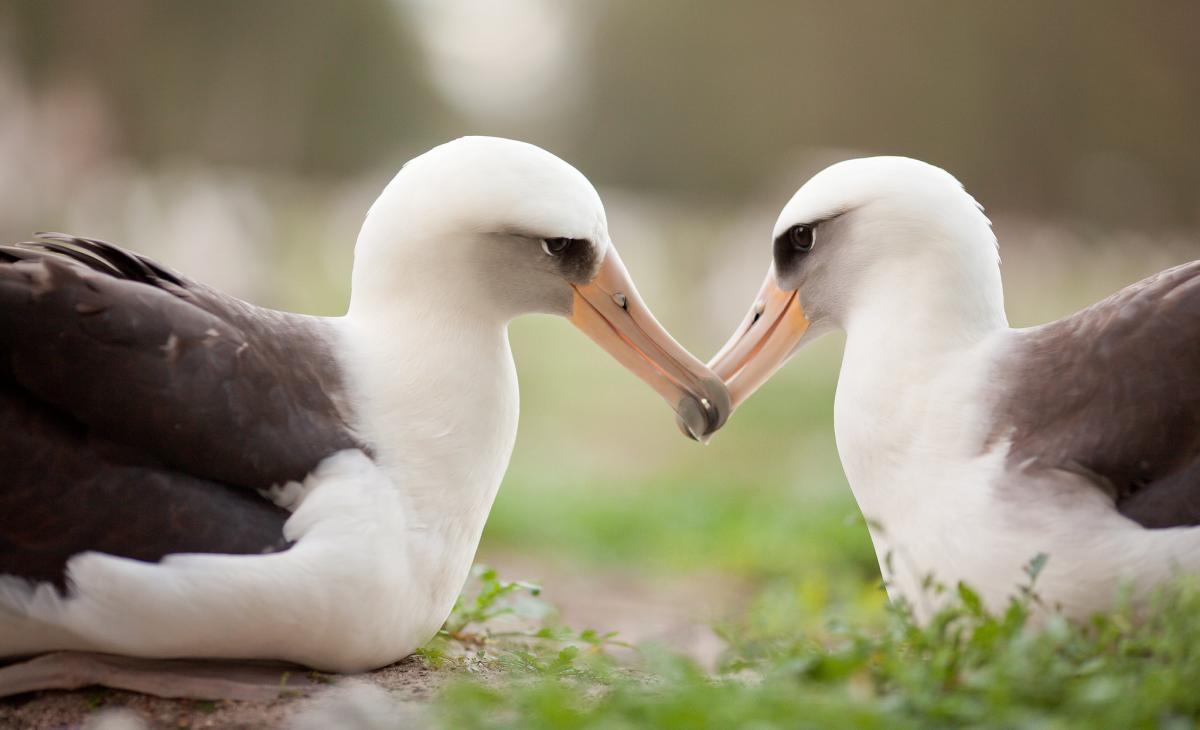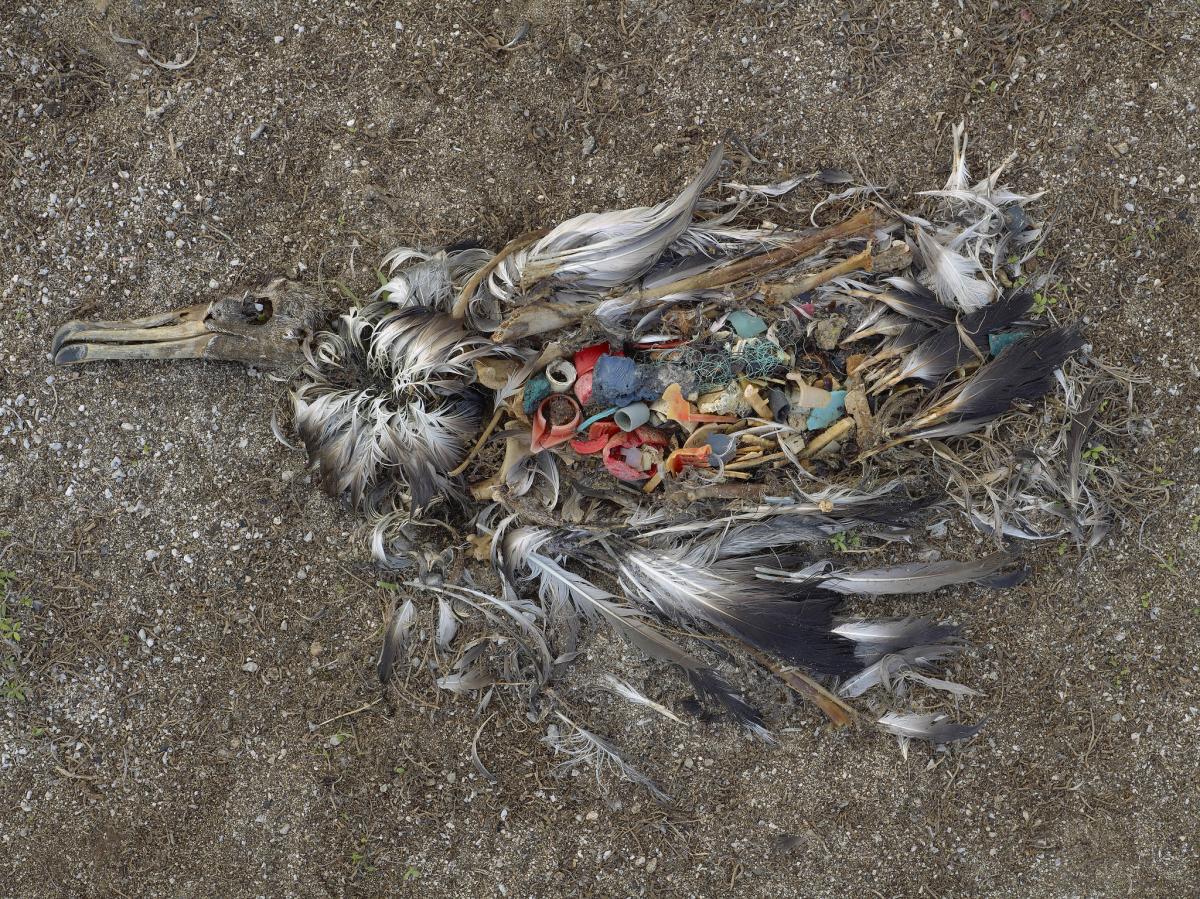May 1, 2020
Why seabirds in the Pacific are eating plastic
BY: Andrea Vale
If you looked down on the streets of Europe in the late 1800s and early 1900s, you’d spot a flock of white and grey feathers bobbing above the crowds: These plumes were albatross feathers, a luxury adornment for ladies’ hats. Meanwhile, thousands of miles away in the north Pacific Ocean, the corpses of slaughtered seabirds were stacking up on Midway Atoll, a group of unincorporated U.S. islands on the northwest edge of the Hawaiian archipelago.
This stark image was relayed in a report from a Smithsonian Institution expedition to the atoll around the turn of the century. Seabirds – especially albatrosses – were slain wantonly across Midway to supply feathers for hats and albumen (egg white) for the production of photography film. When confronted with evidence of this bloodshed, President Theodore Roosevelt deployed U.S. Marines to the atoll in 1903 to stop the killing.
Over a century later and following the designation of protections for local wildlife, Midway Atoll is now home to thriving colonies of more than 3 million seabirds, including three types of albatross: Laysan, black-footed, and short-tailed. While hunters no longer pose a threat, the seabirds face a more surreptitious predator: plastics.
Adult albatrosses sometimes pick up plastic while skimming the ocean surface for food, then inadvertently feed it to their chicks. An estimated 5 tons of plastic travels to the atoll this way each year. Previous studies from the late ‘80s and mid-‘90s reported that 90% and 98% of Laysan albatross chicks on the atoll, respectively, had ingested plastic. Since then, plastic production has dramatically increased.
In theory, plastic shouldn’t be plaguing Midway Atoll. The islands are sparsely inhabited, with approximately 40 people living there at any given time, including some U.S. Fish and Wildlife Service staff. However, NOAA Pacific Islands Marine Debris Coordinator Mark Manuel tells Oceana that there’s minimal plastic pollution coming from local, land-based sources. Instead, the plastics that wash into the atoll – where nearby seabirds can easily ingest it – can primarily be traced back to the populated Hawaiian Islands, the West Coast of the United States, or Southeast Asia.
“It’s a somewhat unique area in that we can clearly say that at least 99-100% of the debris that you’re finding on shore is coming from outside the [atoll] itself,” Manuel said.

The reason for that is the North Pacific Gyre, a series of large-scale currents that flow clockwise, gathering debris from the entire North Pacific. These conditions create an area known as the Great Pacific Garbage Patch: a vortex of trash, sucked in from nearby coasts, swirling within the confines of the gyre.
“Any land-based debris that enters the north Pacific has the potential and opportunity of impacting these coasts of [Midway Atoll],” Manuel said.
Despite the prevalence of plastics in the environment, it’s puzzling that seabirds consume trash because they are normally discerning eaters, said Matthew Savoca, a researcher at Hopkins Marine Station in California. “It’s not like they’re eating driftwood or even items of a biological nature [like plants or organisms] that aren’t their food,” Savoca told Oceana.
However, the birds are likely thwarted by deceptive sensory cues emitted by plastic debris. Consider this chain of effects: Plastic, explained Savoca, creates a petri dish-like environment for bacteria to grow on, concocting a smell that could lure in seabirds.
The visual “signature” of the item could also appeal to a hungry albatross. For instance, studies suggest that North Pacific albatrosses could preferentially select certain colors of plastic, possibly because they look like their prey.
On Midway Atoll, plastic ingestion is a problem that is strikingly visual. Though microplastics are a major source of ocean pollution, seabirds are consuming larger, everyday objects that can be found in most homes and supermarkets. Among the plastic items found inside deceased seabirds are balloon fragments, cigarette lighters, toothbrushes, bottlecaps, and even fully-intact toy soldiers and action figures.

“I think this is what’s really been compelling about the Midway story,” Savoca said. “Unlike these tiny little fragments or fibers, we can identify, ‘Oh man, I used a lighter last week,’ or ‘Oh man, I had a bottle with that cap on it today.’ Those are the types of plastics animals tend to be eating more in Midway than in other places.”
Once ingested, this plastic trash can harm or kill seabirds, which are already vulnerable. Globally, seabirds are the most threatened group of birds. Nearly half of all seabird species are known or suspected to be experiencing population declines, with 28% considered threatened. Half of all seabird species are also known to consume marine debris, but that number is projected to rise to 99% by 2050.
Plastic ingestion is not a phenomenon that’s limited to seabirds, either. Among a population of juvenile loggerhead sea turtles in the North Atlantic gyre, 83% ingested marine debris that exclusively consisted of plastics. Two prominent species of edible fish off the eastern coast of Brazil – the king mackerel and Brazilian sharpnose shark – were found to have ingested plastic debris at rates of 62% and 33%, respectively. Even baby fish have begun consuming plastics within their first few weeks of life.
The solution to this problem, according to Oceana, is preventing plastics from entering marine environments in the first place. An estimated 17.6 billion pounds of plastic trash enters the ocean each year, and companies can drastically curb pollution by giving consumers better alternatives to single-use plastics. Oceana is calling on bottlers, packaging manufacturers, and retailers of all stripes to offer plastic-free choices, for the sake of seabirds, other marine life, and the many people around the world who depend on healthy oceans for their livelihoods. To learn more about Oceana’s international plastics campaign, click here.



